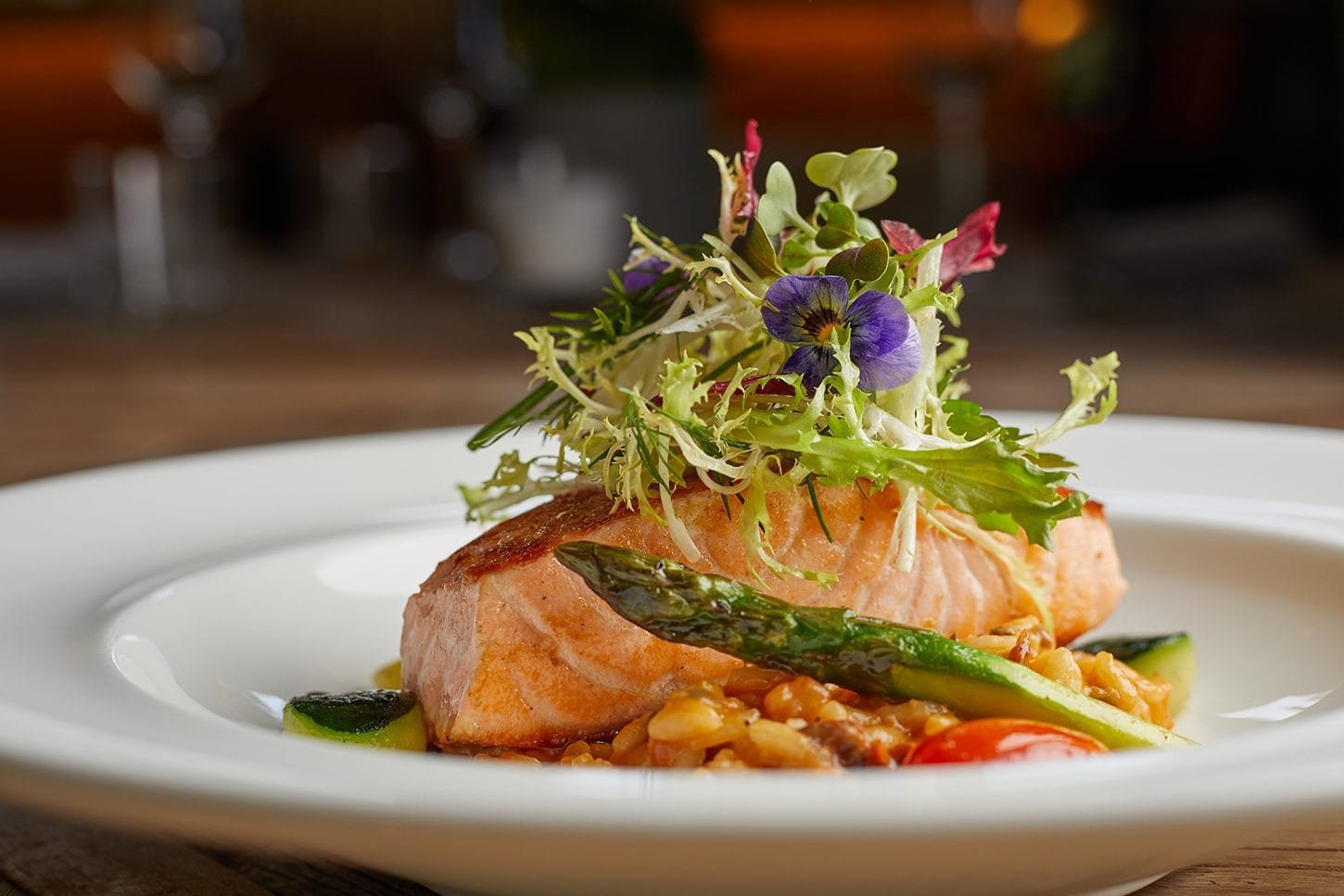Eating Mallorca!
Lamb, slowly roasted in an ancient stone oven until it falls off the bone and sobrasada, a spicy spreadable sausage, smeared over crusty bread and drizzled in honey are just two of the local dishes that you should look out for on the Mediterranean island of Mallorca in Spain.
Traditional Mallorcan food is a hearty affair, mainly based on lamb, pork, game and fish and fresh fruits and vegetables with plenty of garlic, local herbs and olive oil. Rice dishes, such as paella, are also popular, in particular a scrumptious soup version known as arròs brut (dirty rice), a saffron flavoured rice broth made with chunks of pork, chicken, rabbit and vegetables or whatever comes to hand including sobrasada, wild mushrooms and even snails.
The pavement cafes of Pollensa in northern Mallorca
During my recent visit, food featured heavily on the agenda, as it did on the scales on my return, but I am far from complaining. This is all part of the warm Mallorcan hospitality and everything I was offered I enjoyed from the tapas served while wine tasting at C’an Vidalet to the fine dining at the lovely Hotel Illa d’Or or the picnic-style ‘second breakfast’ served on the vintage yacht the Isabel Maria. In fact, I’ve concluded that food is a Mallorcan obsession; as the English discuss the weather, Mallorcans live, breath and eat… food!
And here are some of the edible highlights from my trip.
Sobrasada, a versatile, spicy sausage
Sobrasada, the centre piece of this tapas platter at the Ca’n Vidalet winery
I came across sobrasada in many different guises – in chunks served as a tapas, as a stuffing mixed with pine nuts in mini-cones of pastry and even with baked eggs served with candied onion and honey, as well as thickly spread on chunks of bread sometimes drizzled in honey or sprinkled with sugar.

A tapas platter at the Hotel Illa d’Or including a pastry stuffed with sobrasada and pine nuts

Baked eggs with candied onions, sobrasada and honey at Hotel Illa d’Or
This tasty sausage is made simply from pork, a little salt and pepper and paprika, which gives it this vivid red colour. Raw pork meat is minced with the other ingredients and stuffed into natural pig guts. It is then cured by allowing it to slowly ferment giving the sobrasada its traditional taste and texture. And it’s so good!
Pan Con Tomate

Pan con tomate served with squid at Cafè Plaça, Pollensa
This traditional Catalan dish, bread with tomato (Pa Amb Tomaquet in Catalan) is simply slices of crusty bread, lightly toasted, rubbed with fresh garlic and ripe tomato, then drizzled with extra virgin olive oil. I came across variations of this a number of times. So simple and delicious.
Cafè Plaça in the main square of Pollensa is known for its pan con tomate or pamboli (bread with oil) and their signature dish, pictured above, is served with small tender squid, chopped parsley and garlic mayonnaise. Other options are pamboli with grilled vegetables, a variety of fish, chicken or, my favourite, melted camembert with herbs.
Extra Virgin Olive Oil

It takes 9 kilos of olives to make just 1 litre of oil and the family now produces over 40,000 litres of extra virgin olive oil a year – that’s a hell of a lot of olives!
The families attention to detail really is reflected in the taste of the Solivellas oil and I’m going to be very sorry when the bottle I brought home with me runs out, as I love it drizzled over salads.
Lamb, slowly roasted in an ancient stone oven until it falls off the bone and sobrasada, a spicy spreadable sausage, smeared over crusty bread and drizzled in honey are just two of the local dishes that you should look out for on the Mediterranean island of Mallorca in Spain.
Traditional Mallorcan food is a hearty affair, mainly based on lamb, pork, game and fish and fresh fruits and vegetables with plenty of garlic, local herbs and olive oil. Rice dishes, such as paella, are also popular, in particular a scrumptious soup version known as arròs brut (dirty rice), a saffron flavoured rice broth made with chunks of pork, chicken, rabbit and vegetables or whatever comes to hand including sobrasada, wild mushrooms and even snails.
The pavement cafes of Pollensa in northern Mallorca
During my recent visit, food featured heavily on the agenda, as it did on the scales on my return, but I am far from complaining. This is all part of the warm Mallorcan hospitality and everything I was offered I enjoyed from the tapas served while wine tasting at C’an Vidalet to the fine dining at the lovely Hotel Illa d’Or or the picnic-style ‘second breakfast’ served on the vintage yacht the Isabel Maria. In fact, I’ve concluded that food is a Mallorcan obsession; as the English discuss the weather, Mallorcans live, breath and eat… food!
And here are some of the edible highlights from my trip.



